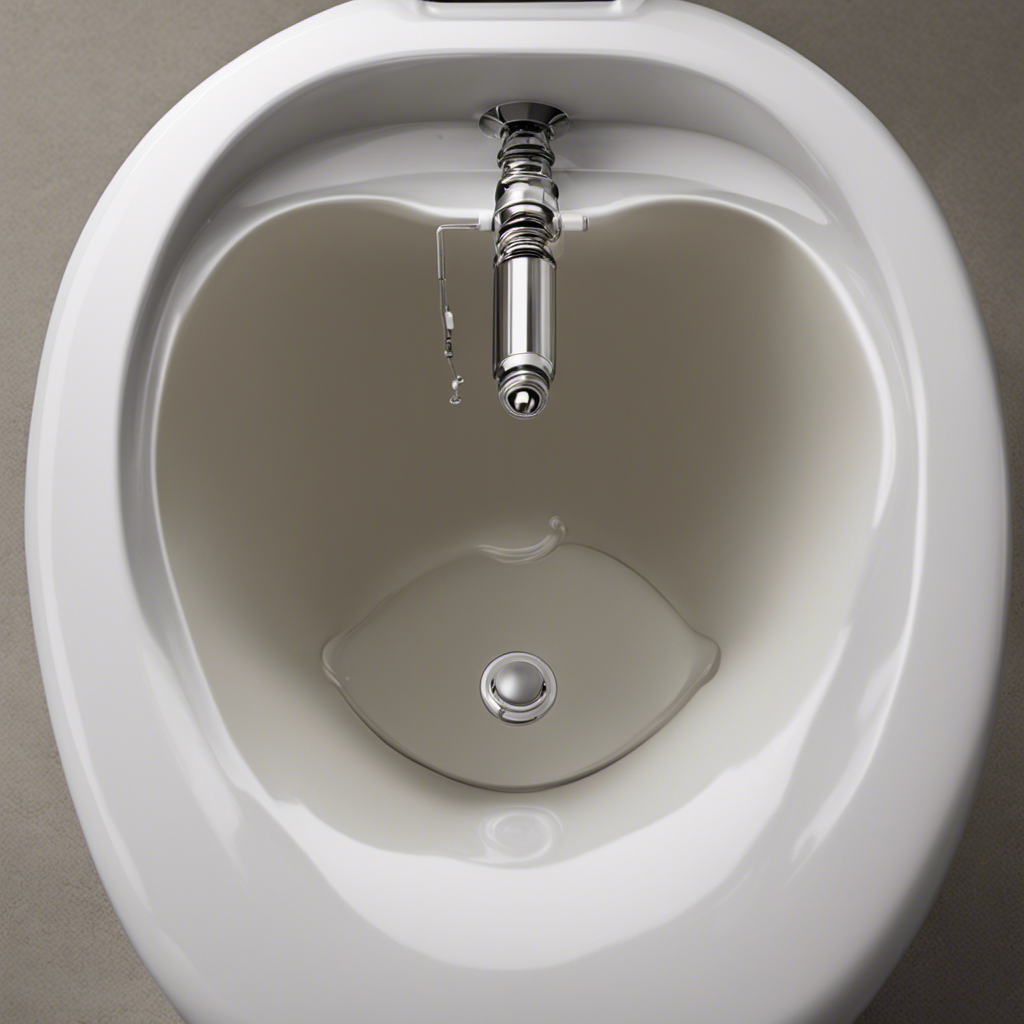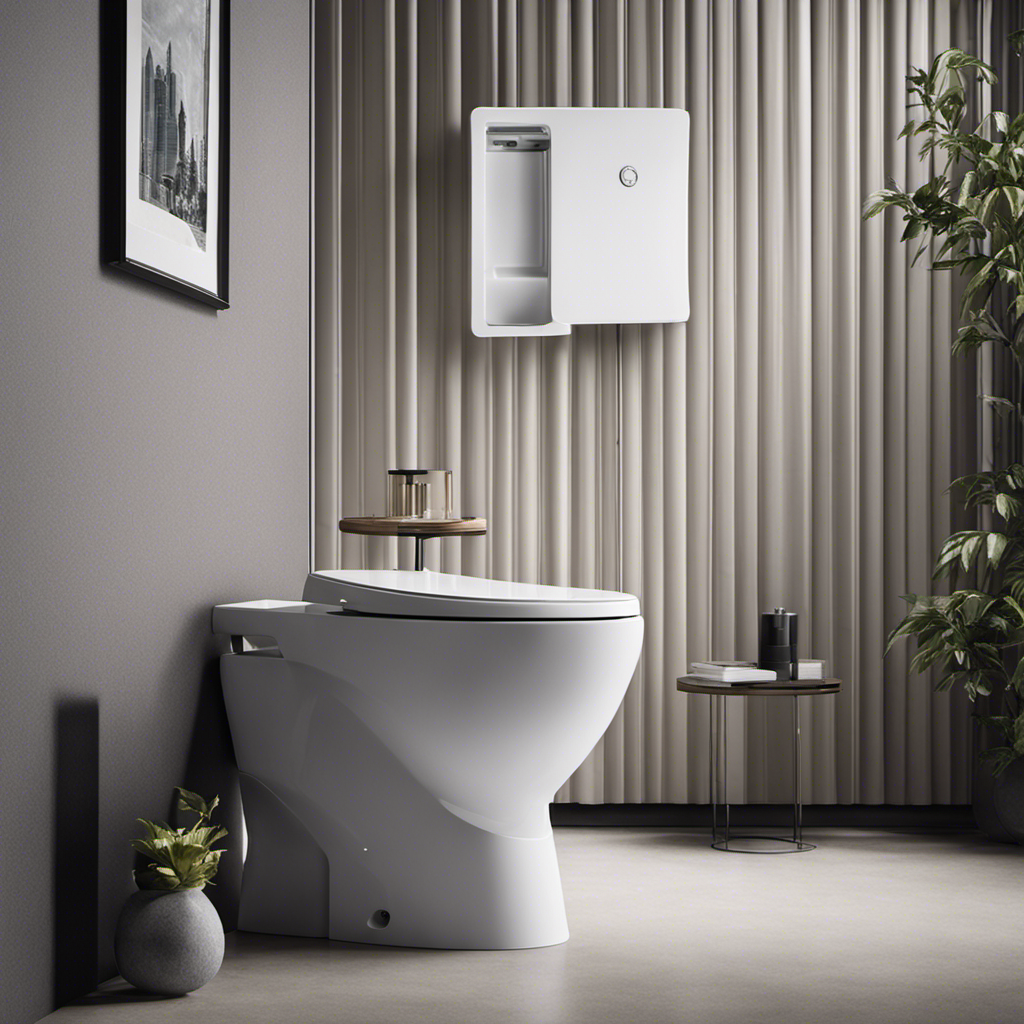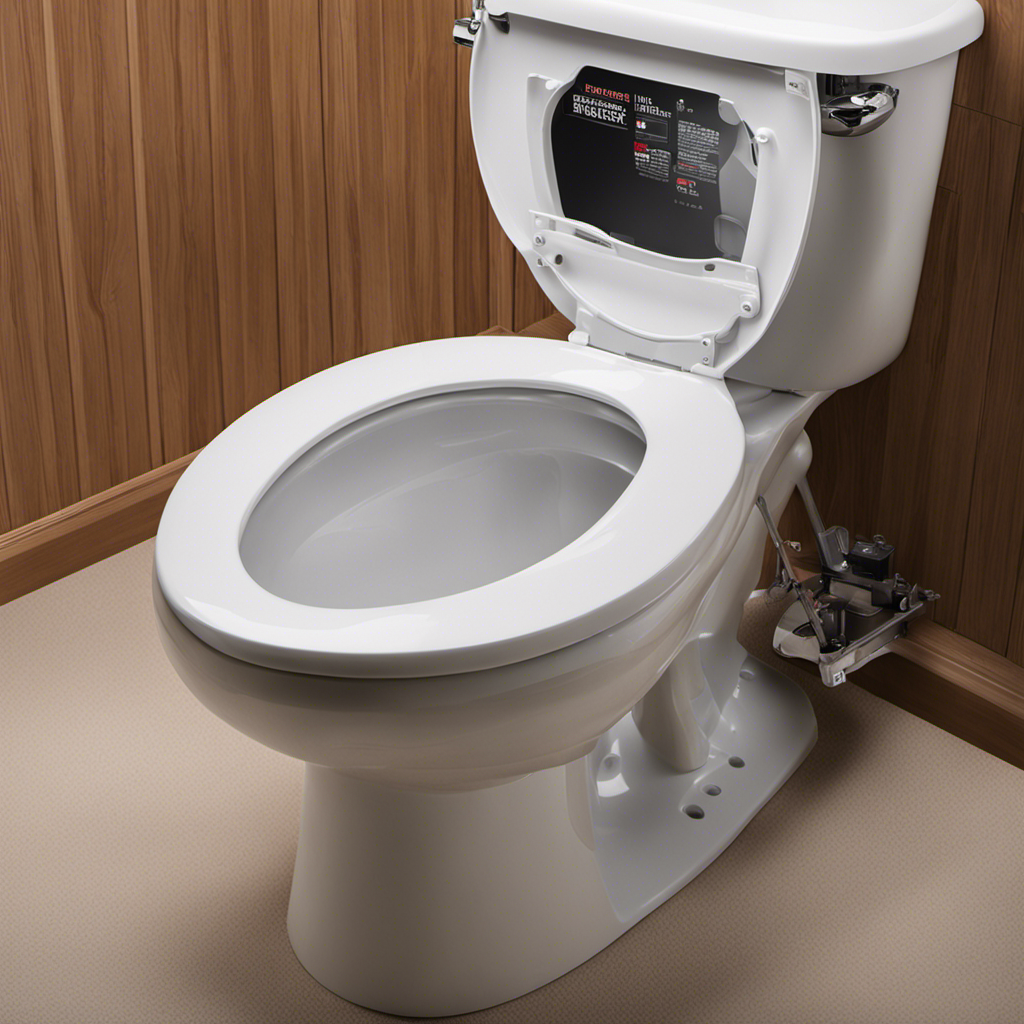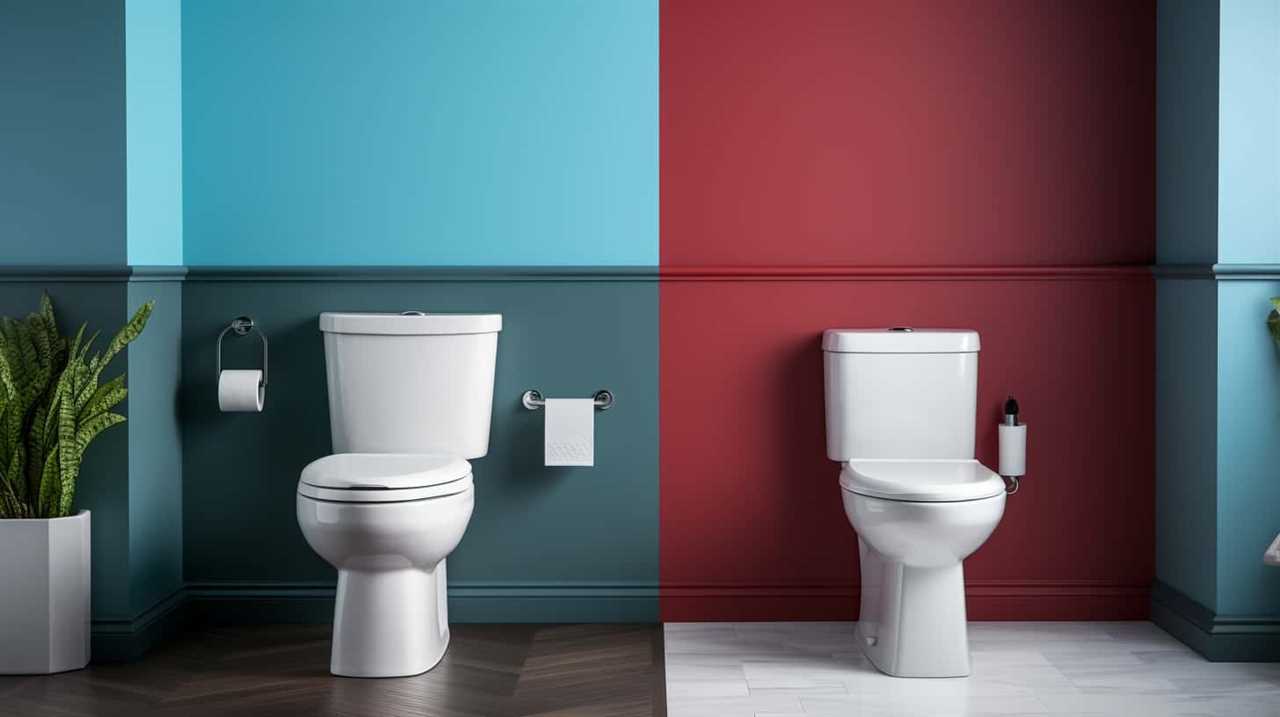Hey there!
Did you know that a slow-filling toilet can be a major inconvenience? Well, I’m here to help you figure out why your toilet isn’t filling up properly.
In this article, I’ll guide you through the common causes of this frustrating problem and provide step-by-step troubleshooting tips. From checking the water supply line to fixing a clogged fill valve, we’ll cover it all.
And if you’re still stumped, I’ll let you know when it’s time to call in the professionals.
Let’s get your toilet back to its flushing glory!
Key Takeaways
- Partially closed fill valve or a faulty fill valve can restrict water flow and prevent the toilet from filling up properly.
- Leaks in the toilet tank can result in water loss and prevent the tank from filling up.
- Water pressure problems can limit the water flow into the toilet, leading to slow or incomplete filling.
- If DIY attempts to fix the issue are unsuccessful, it is advisable to call a plumber who has the expertise and specialized tools to diagnose and fix the problem.
Common Causes for a Slow-Filling Toilet
One common cause for a slow-filling toilet is when the fill valve is partially closed and not allowing enough water to flow in. This can happen due to various reasons, such as toilet tank leaks or water pressure problems.
Toilet tank leaks can occur when the seals or gaskets in the tank become worn out or damaged, causing water to slowly leak out. This reduces the amount of water available for filling the toilet bowl.
On the other hand, water pressure problems can result from issues with the main water supply or the plumbing system. Low water pressure can restrict the flow of water into the toilet tank, leading to slow filling.
To address these issues, it is important to check for any leaks and ensure that the fill valve is fully open to allow proper water flow. Additionally, contacting a plumber may be necessary to address any water pressure problems.
Troubleshooting the Water Supply Line
Check if the water supply line has any kinks or blockages. This is a common issue that can cause low water pressure in your toilet.
Start by turning off the water supply valve and flushing the toilet to drain any remaining water.
Next, inspect the water supply line for any twists, bends, or obstructions. If you find any kinks or blockages, carefully straighten or remove them.
If the water supply line appears to be in good condition, the problem may lie with a faulty valve or faucet. In this case, you may need to replace the water supply line altogether.
To do this, turn off the water supply, disconnect the old line, and install a new one following the manufacturer’s instructions.
This should solve any issues with low water pressure in your toilet.
Checking the Fill Valve for Issues
Make sure you turn off the water supply valve and flush the toilet before inspecting the fill valve for any issues.
The fill valve is an important component of your toilet’s flushing system, responsible for refilling the tank after each flush. If you’re experiencing problems with your toilet not filling up properly, it could be due to a malfunctioning fill valve.
To determine if there are any issues with the fill valve, you can perform a simple inspection. Look for any signs of damage or wear, such as cracks or leaks. Additionally, check the float to ensure it is properly adjusted and not sticking.
If the fill valve is damaged or not functioning correctly, it may be necessary to replace the flapper. This can help restore proper filling and ensure your toilet functions optimally.
Now, let’s move on to the next section to learn how to fix a clogged fill valve.
How to Fix a Clogged Fill Valve
To fix a clogged fill valve, start by turning off the water supply valve and flushing the toilet. This will empty the tank and prevent any water from flowing while you work on the valve.
Next, remove the lid of the toilet tank and locate the fill valve. It is usually on the left side of the tank, connected to the float assembly. Check for any visible leaks or damage, as repairing a leaking fill valve may be necessary.
If there are no leaks, you can try adjusting the water level in the toilet tank by turning the adjustment screw on the fill valve. This will help ensure the proper amount of water fills the tank.
Once you have made the necessary repairs or adjustments, turn the water supply valve back on and let the tank fill up.
If the problem persists, it may be time to call a plumber for professional help.
Professional Help: When to Call a Plumber
If the problem continues after attempting repairs or adjustments, it might be a good idea to call a plumber for professional assistance. While there are several DIY solutions for a slow filling toilet, sometimes the issue may be more complex and require the expertise of a professional plumber. Signs of a faulty toilet flapper include a constantly running toilet, water leaking into the bowl, or the toilet not flushing properly.
Here are four reasons why calling a plumber may be necessary:
-
Expertise: Plumbers have the knowledge and experience to accurately diagnose and fix the problem.
-
Specialized Tools: Plumbers have specialized tools that can help identify and resolve the issue more efficiently.
-
Safety: Plumbing issues can sometimes be hazardous, especially if there is a risk of water damage or electrical problems.
-
Warranty: If your toilet is still under warranty, attempting repairs yourself may void the warranty. A plumber can ensure the repairs are done correctly to maintain the warranty coverage.
Frequently Asked Questions
How Can I Tell if My Toilet Is Slow-Filling?
To determine if my toilet is slow-filling, I check the water level after flushing. If it takes longer than usual to refill, there may be a problem. Troubleshooting toilet issues is important for proper toilet repair.
Can a Faulty Water Supply Line Cause a Slow-Filling Toilet?
Yes, a faulty water supply line can indeed cause a slow-filling toilet. If the water pressure is low or there are leaks in the line, it can impede the flow of water. Alternative solutions include checking for blockages or replacing the supply line.
Is It Possible for the Fill Valve to Be the Cause of a Slow-Filling Toilet?
Yes, the fill valve could be the cause of a slow-filling toilet. It may need maintenance or troubleshooting. Checking the fill valve’s components, such as the float and valve seal, can help identify and resolve the issue.
What Are Some Common Reasons for a Clogged Fill Valve?
Common reasons for a clogged fill valve include debris buildup, a faulty float, or a broken valve. Troubleshooting tips include cleaning the valve, adjusting the float, or replacing the valve if necessary.
When Should I Consider Calling a Professional Plumber for a Slow-Filling Toilet Issue?
When is it necessary to hire a professional plumber for a slow-filling toilet issue? If DIY troubleshooting doesn’t resolve the problem or if there are underlying issues with the plumbing system, it’s best to call a professional for a thorough inspection and repairs.
Conclusion
In conclusion, troubleshooting a slow-filling toilet can be a frustrating task, but with the right knowledge, it can be easily resolved.
By checking the water supply line for any clogs or leaks, and inspecting the fill valve for any issues, you can often fix the problem yourself.
However, if you’re unsure or uncomfortable with the process, don’t hesitate to call a professional plumber.
Remember, just like a well-functioning toilet is essential for a smoothly running household, addressing any issues in a timely manner is crucial to avoid more significant problems down the line.
So, don’t let a slow-filling toilet flush away your peace of mind. Take action and get your bathroom back on track.










